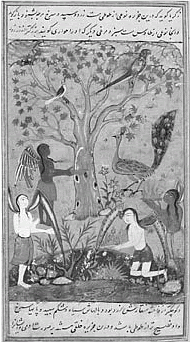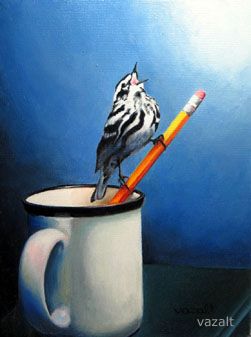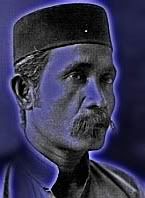Growing Up In Trengganu #197,325
Ah Chin had a pact with Father: to benchmark all his work to an accepted style. He carried the measuring tape like the stethoscope of a doctor, his eyes peering over the lenses of his nose-tip reading glasses, the thickness of the base of a bottle. He stood maybe five feet tall, with a few inches more to spare, and he was probably the thinnest man in Trengganu. He smiled broadly as he wrote into his order book, all jotted down in cipher, and into the box for each customer, he placed a snip of the desired material. And he had this one-liner, "Tak boleh yankee-la!" that he whispered through his toothy smile. And that was the pact he'd made with Father.
Our school trousers were all cut on Ah Chin's table, perhaps because, of all the tailors in Trengganu, he was the most compliant to Father's style. The Ah Chin easy payment plan must've been another that persuaded Father to take us to the bespoke house of this bean-pole. Father had his own ideas about how long our shorts should be, and the accepted width of flares that Ah Chin executed with alacrity and a smile. No yankee-lah, about summed it all.
Yankee was the Trengganu term for the figure hugging style, the drain-pipe girth or shorts that exposed half the thighs, and hugged the bums so the wallet bulged from the back-pocket like a table mountain high. A yankee inclination showed a person of frivolous mien, and a tendency to whistle at passing gals. The antithesis of this was the dress code of the mata-mata, if you remember the policemen of old: skirt like shorts with double pleats, shorts dropping from a line just above the waist, reaching down to the knees and well below.
I have a photo of Father standing proudly in his Ah Chin tailored twills, hands in pockets that bulged out to show the width of the material. And I was standing to his left, in my school uniform whites, shirt perhaps from Globe Silk Store, and shorts in full spread to the cut of Ah Chin our smiling tailor. Sandwiched by us — in sartorial contrast — was a relative I never knew we had, who was a veritable townie, in a contented pose and standing smart, like a true man-about-town yankee.
This was in the KL of old, with the dredging companies dragging up the earth in mining pools, and rubber estates spanning the edge of town with orderly rows of canopied pillars, and there was the Islamic Restaurant in Batu Road and the Stadiums Negara and Merdeka. In fact it was in the Stadium Meredeka that we were now standing, on a day when I was a truant from School to be with Father on his job-promotion interview. The Stadium made me gasp in awe, having seen nothing so cavernous in Kuala Trengganu, and as the Petronas Towers are to present-day gawpers, the Stadium Merdeka was to Kuala Lumpur then and there.
Father was set in his views on trouser width and how far shorts should hang below the knees, but he was a mischievous man in many ways. In days when he'd run me to school soon as he'd returned from the mosque in the morning, he'd jibe and make silly remarks of things he saw along the way, as I sat sideways on his tall gentleman's Raleigh, perched on a kain ssahang wrapped around the horizontal bar between him and the bike's handle bars. I knew then that it was against the law to be travelling thus — because Father told me so — but he told me he'd made a pact with the mata-mata. He made many pacts like that within the confines of Kuala Trengganu, including one that enabled him to send me to the Sekolah Ladang some two years before my schooling years. Soon as I got off the bike at the Primary School (run by a man called Mr Wee Biau Leng, whose headmasterly white shorts was of a width that Father would have approved) he'd make a parting joke as I reached into the rear bag of his bike for a roti paung or two that he'd bought on his way home from dawn prayers. One day a classmate who caught us in our shared glee gave me a puzzled look, "Who's that man who dropped you here?" he asked. When I told him that that was my father, he came back in astonishment, "What did you both find so funny?"
On night Father told us of Ah Chin's weakness for the smoke, that he'd been visited earlier in the day as he was sitting in his darkened room at the top of his stairs — the loteng as we called it in Trengganu — puffing on his exotic pipe, and floating with the smoke that made him drowsy and pulled him to higher fantasia. There were things thrown out of the window, Father said, the sound of shattering glass and the rush of enforcement officers, all that he heard as he passed by on his way to prayers. We held our breaths for our bean-pole of a smiling tailor. But in the Ramadhan that came after that, father took us back to Kampung Daik, to be kitted-up for Hari Raya; and I was happy to see that our tailor man was still there to measure us and keep his pact with Father, looking as he always did, like he'd just emerged from a crack in the door. As he pulled out his tape measure and jotted notes into his book, he gave Father a knowing smile.
Just a pip's throw from Ah Chin, over the bridge opposite the red fire engines of Kampung Daik was a shop known as Kedai Bbunga, which was Trengganuspeak for 'the flowered shop'. It could have been its wallpaper that gave the shop its name, but I can't say for sure. In it was a man who seldom wore a shirt, but stood in what was the precursor to the boxer shorts, with thin dark stripes running vertically, and held around his waist by a string that ran through the waist-band, that was knotted in a bow just above the button of his belly.
Father had a little book there, which the man — who was known to Mother as Awang — kept in a fair-sized tin that he hung to his ceiling, and which he pulled down when needed, by the device of a little pulley. On the cover of the note-book were the figures '555', a standard note-book kept by many shops to record the credit purchases of their customers.
The kedai bbunga had the smell of apples and pears, and the buah lai, which was the Chinese pear. There were biscuits made by Thye Hong, and little balls of crunchy biscuit, topped with little twirls of coloured sugar. There were preserves from the land of Awang's ancestors, Chinese dates that we in Trengganu knew as buah kerecut, and the rugby-ball shaped Chinese olives, or buah kana. In sacks came preserves of an unknown fruit, with seeds that you spat out once you'd its fleshy parts, sweet and red, with flies scrambling away from it as Awang scooped out your ten cents' worth into the page of a newspaper. There was buah ssemak in a clear glass jar, flat and dried and coated with a layer of white fungus or maybe sugar. It was many years before I saw the fruit in its fresh, uncompressed shape, going by the name of the Japanese kaki.
Awang also kept many things that were invented to make a child's mouth water — Cadbury's fruit and nut chocolate bars, Smarties to throw in the air and swallow, and biscuits called 'Reading' and 'Marie'. The assorted Huntley & Palmer came in tins, though we'd be lucky to take one home in a year. And there were grapes and canned lychees, and the buah bidara, the size of a large marble; its thin dried skin brown and brittle. Rattling inside, as you shook it, was the once succulent flesh of the fruit, now dark and shrivelled, and clinging tightly to its shiny dark stone, the size of a small glass marble. I pushed one up my nose one day for reasons that are now obscure, and was immediately taken to the hospital.
There was indeed a record of the beginning of this medical case, in a round can tied to the ceiling with a string, in a little notebook with 5-5-5 on its cover.
 Marco Polo, as some contend, never went to China. (see, for instance, Frances Wood's, Did Marco Polo Go To China? Secker & Warburg, London, 1995) and spaghetti never came from there. It was the Arabs in fact, who invented the spaghetti, when they ruled in Sicily, bringing with them not only their skills in food technology, but also the necessary durum wheat for its manufacture.
Marco Polo, as some contend, never went to China. (see, for instance, Frances Wood's, Did Marco Polo Go To China? Secker & Warburg, London, 1995) and spaghetti never came from there. It was the Arabs in fact, who invented the spaghetti, when they ruled in Sicily, bringing with them not only their skills in food technology, but also the necessary durum wheat for its manufacture. The Mastika was then a decent-sized monthly, and nothing like the dwelling place that it is now, of bodies popping out at dusk from graves and banshees a-screaming in the early hours. It had regular stories then, penned by a man who later became a government minister in Singapore, and pictures of young ladies in the sarong kebaya, and Malay poetry by people like Tongkat Warrant, and Masuri S.N., who wrote good poetry before poetry became very kabur. But the Qalam was a different ball-game altogether, it was acerbic in its political content, though solemn in its religious lectures. One day in class in Sekolah Ladang, the teacher asked for names of magazines we knew to keep the conversation flowing, when I immediately said Qalam, only to be riposted by a look of absolute horror. "No, No," he said, as if it was made of raksa.
The Mastika was then a decent-sized monthly, and nothing like the dwelling place that it is now, of bodies popping out at dusk from graves and banshees a-screaming in the early hours. It had regular stories then, penned by a man who later became a government minister in Singapore, and pictures of young ladies in the sarong kebaya, and Malay poetry by people like Tongkat Warrant, and Masuri S.N., who wrote good poetry before poetry became very kabur. But the Qalam was a different ball-game altogether, it was acerbic in its political content, though solemn in its religious lectures. One day in class in Sekolah Ladang, the teacher asked for names of magazines we knew to keep the conversation flowing, when I immediately said Qalam, only to be riposted by a look of absolute horror. "No, No," he said, as if it was made of raksa. 
